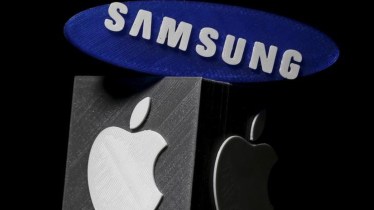Amid the ongoing premiumisation trend, Samsung has surpassed Apple to regain its top position in the premium phone segment in the April-June quarter, analysts said. The reason for Samsung to top the Rs 30,000-45,000 segment is because of factors like affordability, and new launches in the segment. In the ultra-premium segment, Apple continues to maintain its lead with a 59% share, according to data by Counterpoint.
Further, Apple’s larger focus on the segment above Rs 45,000 and people awaiting the festive season to see a drop in prices of iPhones are also the factors, which led Samsung to surpass Apple after one year, with a 34% market share in the April-June quarter. In the overall smartphone market as well, Samsung has the highest 18% share and has been leading the marketing for three quarters now.
“The Rs 30,000-45,000 segment belongs to Android phones and Apple does not have a great market in the segment because of its ultra-premium approach. Since the Rs 30,000 to 45,000 segment is growing, we can expect prices of smartphones by Apple like iPhone 12 at such price points during the festive season,” said Tarun Pathak, research director at Counterpoint.
For Samsung, launches in Galaxy S23 smartphone series coupled with its financing scheme, led to growth of its shipments and market share during the quarter. For Apple, currently iPhones such as iPhone SE 2022 and iPhone 11, are available at price points below Rs 45,000. According to analysts, Apple’s phones fall under the premium segment (below Rs 45,000) only when their prices drop after being in the market for some time.
The premium smartphone segment contributes 17% to the overall shipments of smartphones in India, according to Counterpoint. The growth in the premium segment in the April-June quarter was despite the fall in total smartphone shipments by 3% year-on-year. Base effect, pent-up demand and improving macroeconomic conditions helped the market close at less than the expected decline. “However, the premium smartphone segment presented a different picture, growing 112% YoY in Q2 (April-June),” Counterpoint said.
According to TechArc, Samsung has quarantined its premium market space through the S series and now the Z foldable smartphones in this segment. OnePlus has also been able to create a strong presence in the target segment.
“The other android-based smartphone brands still have iPhone threat hovering over them with Apple expected to register 10 times growth in sales in a decade by 2024,” said Faisal Kawoosa, chief analyst and founder at TechArc.
According to Kawoosa, in 2024 Apple is expected to cross the 10 million milestone that means since 2014 its sales will grow 10 times in India.
Analysts believe that with Apple doubling its market share in the next 3-5 years, Samsung might not get affected much owing to its S and Z series smartphones. Kawoosa said, Z series has a unique fold form factor giving it a visible and tangible edge over iPhone and with the launch of 5th generation of Z Fold5 and Z Flip5, the products will be seen high on maturity by the consumers than from other brands who are foraying in the foldable smartphones niche.
On the overall smartphone segment in April-June, the companies have seen an improvement in the inventory and demand situation ahead of the coming festive season.
“Aggressive measures were implemented by OEMs as well as channels during the quarter to clear existing inventory through multiple sales and promotions. At the consumers’ end, falling inflation and better growth prospects facilitated demand recovery,” said Shilpi Jain, senior research analyst at Counterpoint.
5G smartphone shipments in India crossed the 100-million mark in April-June as 5G upgrades picked up pace driven by the expansion of 5G networks and availability of affordable devices, Counterpoint said. 5G smartphone shipments grew 59% YoY during the quarter.
Among other brands, vivo maintained its second position in the overall smartphone market. It was the only brand among the top five to experience YoY growth. Further, OnePlus was the fastest-growing brand in India’s smartphone market in Q2 with 68% YoY growth, Counterpoint said.
